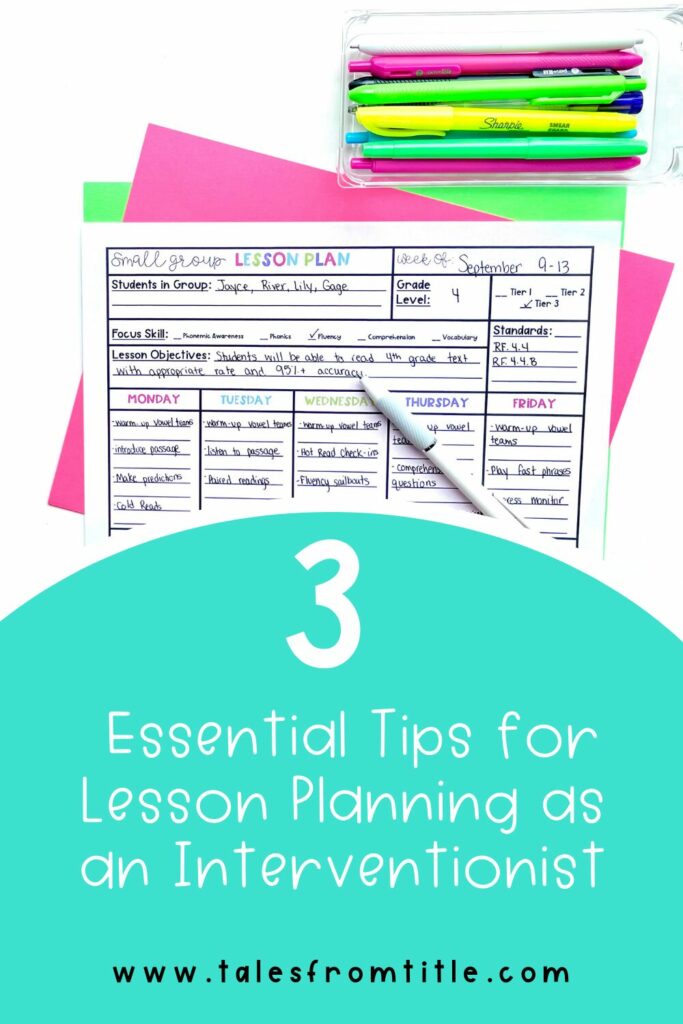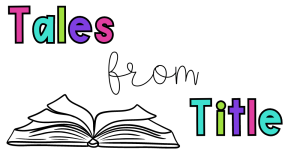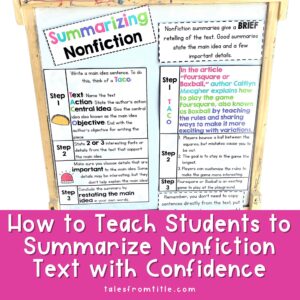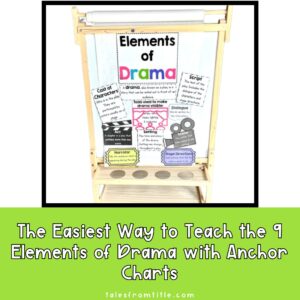
When I accepted a job as a Title 1 reading interventionist in 2016, I had no prior experience in that type of role. Although I had earned my reading specialist certificate three years earlier, I hadn’t actively pursued a reading specialist position because I was content in the classroom. The transition from classroom teacher to reading specialist/interventionist opened my eyes to the demands of the role, particularly the time and effort required for small group lesson planning. It was overwhelming at times, especially when starting a new round of intervention groups.
As an interventionist, it is crucial to provide targeted support to students who may need additional help to meet academic goals. To ensure interventions are successful, thoughtful and efficient, lesson planning is key. Today, I want to share with you three essential tips for reading interventionists that can enhance your lesson planning process, making it more effective and manageable.
Tip 1: Find a Lesson Plan Template That Works for You
Having a clear and detailed plan is essential for effective interventions, and having a clear and organized template can streamline the process. The right template not only helps you outline your objectives and strategies, but also serves as a quick reference during instruction.
Now, I’m a sucker for all the cute teacher planners out there, but in my opinion, they DO NOT work for interventionists or special education teachers. Specialized teachers like us meet with so many groups and have so many unique goals and notes that those tiny little squares just aren’t enough to give you a clear guide. Plus, they usually only have 7 or 8 boxes per day, and if you are like me, you probably meet with 12 – 15 groups per day!
My advice is to do a Google or TPT search for small group lesson plan templates to find one you like. You could also create your own. There are so many templates available, so it’s important to find one that aligns with your personal preferences and the specific needs of your students. A well-organized template not only saves time but also reduces the stress of daily planning, allowing you to focus more on student progress.
Things you may want to consider when finding a template you like:
- Objective or Learning Goal: Space to clearly state what you aim to achieve with the intervention session(s).
- Materials Needed: Space to list all necessary resources to ensure you can quickly grab all your supplies as you are gathering your materials for the week.
- Activities and Strategies: Space to outline the specific activities and small group instructional strategies you’ll use during each lesson.
- Standards Being Addressed: Space to include the standards being addressed or targeted during the lessons.
- Focus Skill: Space to choose the focus of the group, such as phonemic awareness, phonics, fluency, comprehension, or vocabulary if you are a reading interventionist.

If you are looking for small group lesson plan templates, check out my TPT store! I have a variety of lesson plan templates. They all have a printable version so you can write your plans by hand and a Google Slides option so you can just type your lessons and print them out. I designed these templates to fit the unique needs of teachers and offer a few different wording options:
- Lesson Goals
- Lesson Objectives
- Essential Learning Outcomes
- I Can Statements
- Editable Version so you can use whatever wording you want!
Tip 2: Plan Similar Groups at the Same Time
Have you ever heard the saying: “Work smarter, not harder”? Planning similar groups at the same time is a great example of working smarter, not harder. If you have two different groups working on similar topics or skills, plan for those groups at the same time. This is especially helpful if you work in a district that doesn’t have specific intervention programs or tools.
For instance, by planning fluency activities for my 4th and 5th-grade groups simultaneously, I was able to streamline my planning process, freeing up time for other tasks. Both groups were working to improve their fluency, and while their reading levels were different, using a similar structure for each day and week allowed me to easily plan for these groups together. Not only did this give me more time to plan effective lessons, but I also became more confident and could make changes to the lessons between groups if something didn’t work well for the first group.
Here’s an example of how my plans would be the same for both groups:
- Monday: Introduce vocabulary and do word work activities with each group. Then, get a cold read from everyone in the group.
- Tuesday: Both groups could do fluency pyramids using sentences from the text their group is using.
- Wednesday: Practice with repeated readings and check in on their progress, giving feedback before their hot reads.
- Thursday: Do a hot read with each student and have a comprehension activity for them to complete.
- Friday: End the week with a fun fluency game or a reader’s theater.
When planning similar groups together, you can:
- Leverage Resources Effectively: Use common materials and resources across sessions, reducing preparation time.
- Address Common Challenges: Tackle shared learning difficulties within a single planning session, allowing for a more comprehensive approach.

Tip 3: Don’t Try to Plan for All of Your Groups in One or Two Days
This is probably the smartest thing I ever started doing, and it took me a few years to finally get into this habit. It helped me avoid the overwhelm of trying to plan for all my intervention groups in one sitting, and it also kept my plans from becoming sloppy, rushed, and less than stellar when I ran out of time and energy to plan a good lesson. Instead of trying to get all my planning done on Thursdays and Fridays, I now plan for a few groups each day of the week. You can plan by grade level or use Tip 2 (see above☝🏼) and plan for groups that have a similar focus on the same day. Adopting this approach not only improved the quality of my lesson plans, but also helped maintain a better work-life balance, reducing the burnout often associated with interventionist roles.
Benefits of having a set day to plan for certain groups:
- Reduced Cognitive Load: Planning for specific groups on designated days minimizes cognitive overload, enhancing the quality of your lesson plans.
- Improved Focus: By concentrating on a particular set of students, you can delve deeper into their progress, challenges, and individualized strategies.
- Enhanced Flexibility: Allocating specific days for planning provides flexibility, allowing you to adapt your approach based on ongoing assessments and student feedback.

Conclusion
Effective lesson planning is the key to successful interventions. By finding the right template, grouping similar sessions, and strategically planning on designated days, you can elevate the impact of your interventions and create a more organized and efficient teaching experience. Remember, thoughtful planning not only benefits your students but also contributes to your professional growth as an interventionist. These small group instructional strategies can truly make a difference.
I’d love to hear from you! How do you approach lesson planning as an interventionist? Share your strategies in the comments below and let’s learn from each other.







